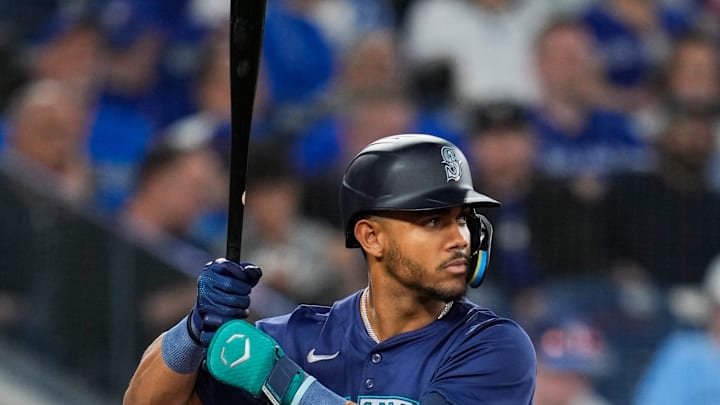Fifteen games into the season, the Mariner's offense has been off to a sluggish start. That’s been mostly due to the five guys who were hitting 1-5 on Opening Day. JP Crawford, Julio Rodriguez, Jorge Polanco, Mitch Garver, & Cal Raleigh are all hitting below the Mendoza line, and all have an OPS below .600. There’s no way to sugarcoat it: that’s bad. Today, let’s break down the advanced metrics on each player, and discover why they have each been struggling at such a high clip.
JP Crawford
Slashline: .164/.261/.262 (.523 OPS) 61 wrc+, 56 ops+, 0.1 bWAR, 0.0 fWAR
JP has struggled mightily after his career year in 2023. And right now, the advanced metrics are not showing a lot of positive signs. JP ranks in the 16th percentile for xBA (.205), which is notably still 41 points higher than his actual BA of .164, but still not very good. His expected slugging sits at .333, also much higher than his current mark of .262, but still only in the 27th percentile.
The problem for JP is that he simply isn’t making good, hard contact. Crawford’s average exit velocity is currently just 85.1 MPH (12th percentile), his barrel rate is 4.1% (31st percentile), his hard hit % sitting at 28.6% (15th percentile), and his Sweet-spot % is just 16.3% (2nd percentile). Most troubling is the exit velocity numbers. JP, until last year, had always had an average exit velocity of around 85-86 MPH, which usually ranked in the bottom tenth of the league. That makes sense, he was never considered to be a power hitter.
Last year, he cranked his exit velo up to 88.3 MPH, a career-high, and suddenly hit 19 HRs. This year, his exit velo seems to be returning to career norms, indicating that perhaps that power influx from last year was a mirage, possibly the ‘driveline effect.’ Similarly, with his hard hit %, JP set a career-high last year, when he hit the ball hard in 36.2% of ABs, easily the best of his career. This year he is at 28.6%, which is quite similar to his career average of 30.8%. Perhaps JP Crawford just isn’t a power hitter?
Now, he can make this work, and we’ve seen him be a good hitter without the power. JP Crawford was a productive hitter in 2021-2022 despite only hitting 15 home runs. He had 103 wrc+ and a 101 ops+ during that span, so even without power, JP was a slightly above-average hitter. Some of his decline this year could be attributed to the increase in breaking balls he’s been seeing. Pitchers are throwing breaking balls to JP 29% of the time, the most of his career. Not surprisingly, he’s whiffing at 32% of breaking balls. JP crushed offspeed pitches last year, hitting .301 with 4 HRs, but he is seeing fewer offspeed pitches than ever before (8.3%).
The good news? He isn’t chasing pitches, and he isn’t striking out much. His chase rate of 19% ranks in the 89th percentile, and his whiff rate at 15.9% is 87th percentile. He is striking out 17.4% of the time, which is slightly less than his career average of 18%.
If JP wants to get back to being a productive hitter, he would benefit from being more patient and adjusting to breaking balls. Last year he led the AL in walks, which were a huge part of his game. This year he is walking only 10.1% of the time, which would be the third-lowest walk rate of his career. Improving his plate discipline will also hopefully give him better pitches to hit. If the underlying numbers are accurate, Crawford might not be a power hitter, and if that is the case, he needs to go back to his contact roots and do what made him a productive player in 2021-22. If not, these trends could continue to get ugly for the Mariner's shortstop.
